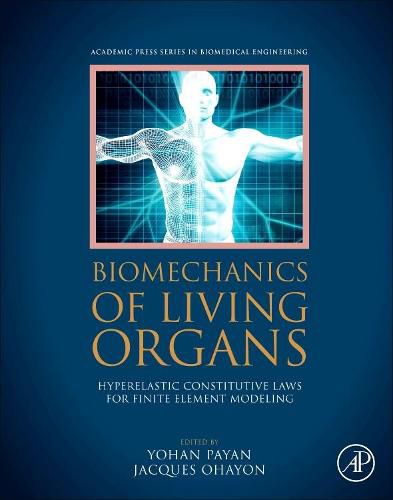Readings Newsletter
Become a Readings Member to make your shopping experience even easier.
Sign in or sign up for free!
You’re not far away from qualifying for FREE standard shipping within Australia
You’ve qualified for FREE standard shipping within Australia
The cart is loading…






Biomechanics of Living Organs: Hyperelastic Constitutive Laws for Finite Element Modeling is the first book to cover finite element biomechanical modeling of each organ in the human body. This collection of chapters from the leaders in the field focuses on the constitutive laws for each organ.
Each author introduces the state-of-the-art concerning constitutive laws and then illustrates the implementation of such laws with Finite Element Modeling of these organs. The focus of each chapter is on instruction, careful derivation and presentation of formulae, and methods.
When modeling tissues, this book will help users determine modeling parameters and the variability for particular populations. Chapters highlight important experimental techniques needed to inform, motivate, and validate the choice of strain energy function or the constitutive model.
Remodeling, growth, and damage are all covered, as is the relationship of constitutive relationships of organs to tissue and molecular scale properties (as net organ behavior depends fundamentally on its sub components). This book is intended for professionals, academics, and students in tissue and continuum biomechanics.
$9.00 standard shipping within Australia
FREE standard shipping within Australia for orders over $100.00
Express & International shipping calculated at checkout
Biomechanics of Living Organs: Hyperelastic Constitutive Laws for Finite Element Modeling is the first book to cover finite element biomechanical modeling of each organ in the human body. This collection of chapters from the leaders in the field focuses on the constitutive laws for each organ.
Each author introduces the state-of-the-art concerning constitutive laws and then illustrates the implementation of such laws with Finite Element Modeling of these organs. The focus of each chapter is on instruction, careful derivation and presentation of formulae, and methods.
When modeling tissues, this book will help users determine modeling parameters and the variability for particular populations. Chapters highlight important experimental techniques needed to inform, motivate, and validate the choice of strain energy function or the constitutive model.
Remodeling, growth, and damage are all covered, as is the relationship of constitutive relationships of organs to tissue and molecular scale properties (as net organ behavior depends fundamentally on its sub components). This book is intended for professionals, academics, and students in tissue and continuum biomechanics.